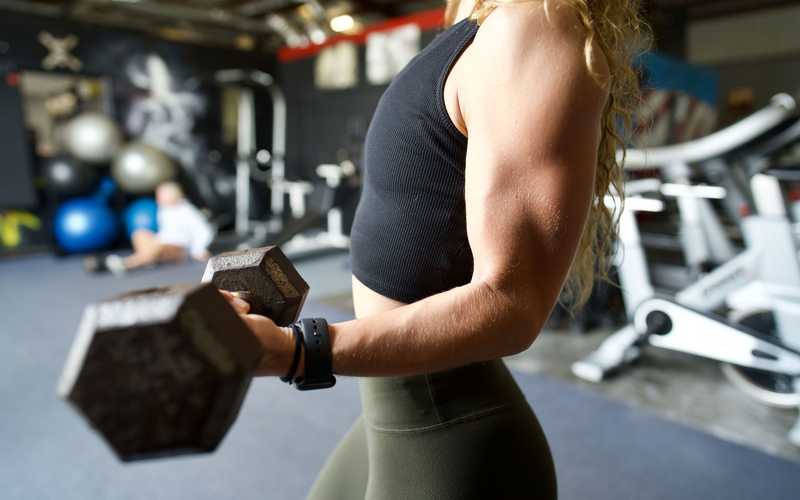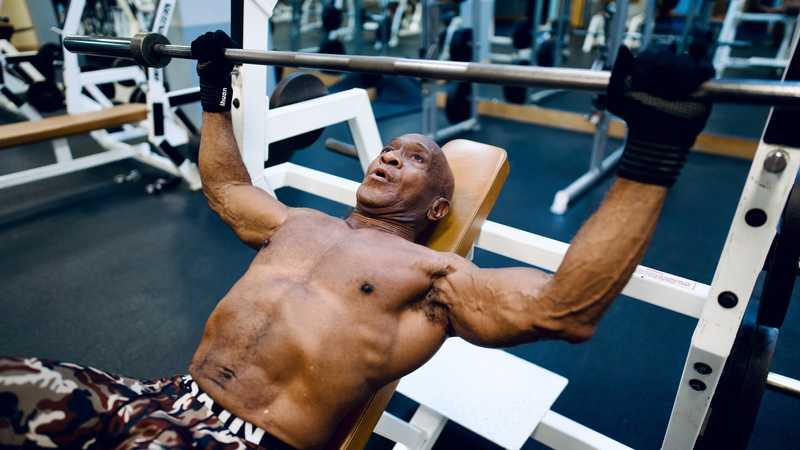In order to grow your biceps, you must participate in some form of resistance training that places stress on your muscles. This stressing process, called hypertrophy, creates an adaptive response that stimulates growth within the cells of your muscles.
The biceps muscle is commonly targeted in upper body strength routines. There are many exercises for strengthening the biceps, but which is the best for building biceps strength and size?
This article will look at two popular biceps exercises: hammer curls and biceps curls. Whether you want more defined arms or just stronger muscles for daily life, we'll help you understand which one works best for your goals.
While a bulging biceps can indicate a strong muscle, what's more important is its role in performing essential daily activities, like feeding yourself, lifting a glass of water, and picking up your child.
Key Takeaways
- Hammer curls target the long head of the biceps and outer forearm, while traditional biceps curls focus on the short head for overall bulk.
- For best results, perform both types of curls alongside compound exercises 2-3 times per week.
- While isolation exercises build muscle size, functional movements that mimic daily activities are more important for practical strength.
Table of Contents
- Why Biceps Strength is Important
- Biceps Anatomy and Physiology Basics
- What is a Biceps Curl?
- What is a Hammer Curl?
- Hammer Curls vs Bicep Curls: Which is Better?
- Why You Need to Lift Weights Every Week
- What About Functional Bicep Strength?
- How a Physical Therapist Can Help You Maximize Your Bicep Function
- Avoid the Cookie Cutter Approach to Bicep Strength
Why Biceps Strength is Important
Biceps strength is important for many reasons. The biceps works in conjunction with the rotator cuff muscles to stabilize the shoulder joint, especially during movement. An appropriate level of strength and function in the biceps can help prevent injuries with daily shoulder use. Additionally, biceps with adequate endurance are necessary for many everyday activities such as carrying groceries, carrying a child, shoveling, mopping, or vacuuming. Any movement that involves pushing, pulling, lifting, or throwing will use the biceps muscle.
Others may focus on biceps strengthening to improve ease and performance with compound exercises like pull-ups, chin-ups, and rowing. Some are interested in the cosmetic enhancement, and perhaps confidence boost, that comes with the appearance of larger, more toned upper body muscles.
Biceps Anatomy and Physiology Basics
Biceps literally translates to "two-headed." In the upper arm the biceps brachii lies on the front of the arm between the shoulder and elbow. The long head and short head of the muscle originate from two different areas on the scapula and share a common insertion point below the elbow.
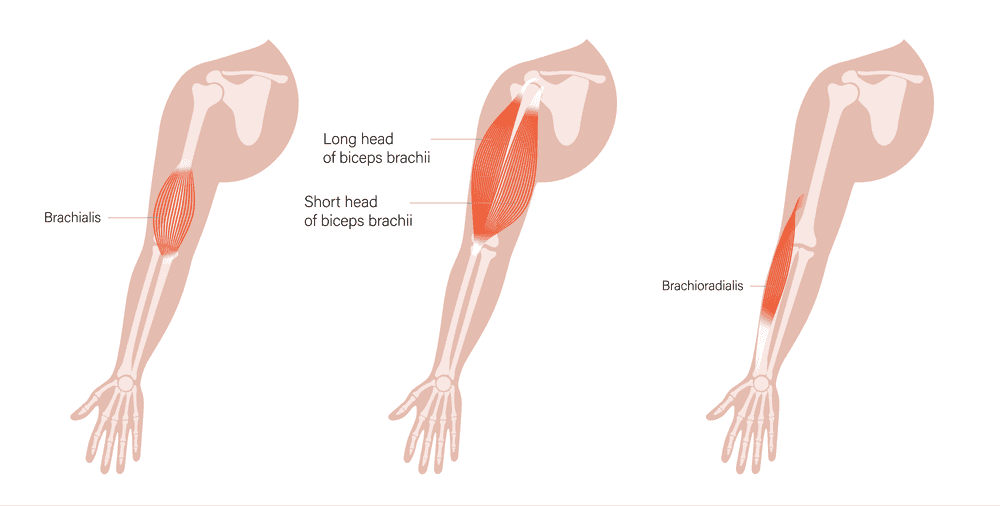
- The long head originates from the supraglenoid tubercle of the scapula (an area just above the socket of the shoulder joint)
- The short head originates from the coracoid process of the scapula (the bony spot you can feel on the inside of your shoulder)
The biceps is one of the chief flexors of the forearm. It functions to bend the elbow and supinate the forearm. Supination is the act of turning the hand so that the palm faces upward. This action is necessary for activities such as picking items up, opening a door, or unscrewing a jar.
What is a Biceps Curl?
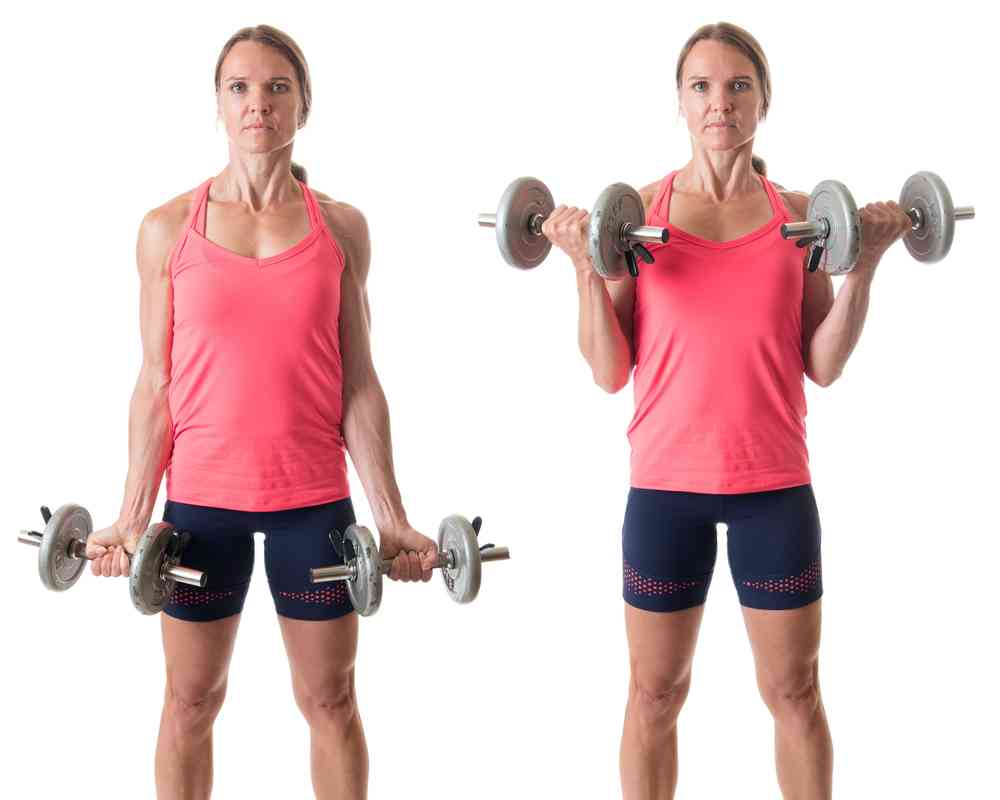
A bicep curl is a weightlifting exercise that targets the biceps muscles. It can also be used to describe the motion of flexing or bending the elbow. This exercise can be done with dumbbells, barbells, resistance bands, or without weight.
What Muscles Are Used with a Bicep Curl?
A traditional bicep curl involves bending the elbow with the palms facing up. This position targets more of the muscle fibers of the short head of the bicep. The short head fibers are what tend to make the entire bicep muscle appear bulkier when toned and flexed.
Since the palms are facing upward, the flexors of the wrist and brachialis muscle in the lower half of the humerus (your arm bone) are also engaged in this exercise.
How to Perform a Bicep Curl
- Start by standing with your feet shoulder-width apart and your knees slightly bent. Hold a weight in each hand with your palms facing forward.
- Keeping your upper arms stationary, exhale as you flex your elbows and curl the weights toward your shoulders.
- Squeeze your biceps at the top of the curl and hold for an extra beat.
- Inhale as you slowly lower the weights back to the starting position.
- Repeat for 12-15 reps. (Try fewer reps and a heavier weight for bulky strength or more reps for endurance)
What is a Hammer Curl?
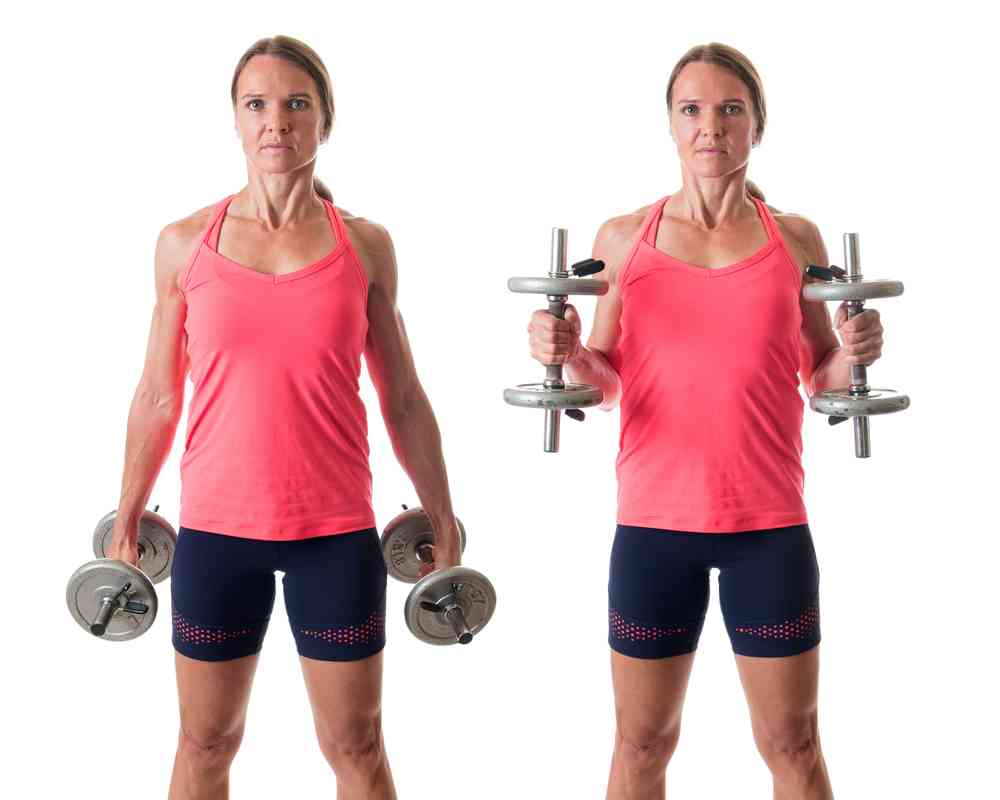
Unlike the standard biceps curl performed with palms up, the hammer curl is performed with palms facing each other. This change in hand position changes which part of the biceps muscle is primarily activated to flex the elbow.
What Muscles Are Used with a Hammer Curl?
The biceps is still the primary muscle activated during a hammer curl. However, the long head of the biceps is targeted more than the short head. Additionally, the brachioradialis muscle on the outside of the forearm is engaged to a greater degree. This will help balance the overall strength and appearance of the arm. Weight lifters often perform hammer curls for the bulking effect they can have on their outer forearm due to the enhanced brachioradialis engagement.
How to Perform a Hammer Curl
- Start by standing with your feet shoulder-width apart and your knees slightly bent.
- Hold a weight in each hand with your palms facing each other inward.
- Keeping your upper arms stationary, exhale as you flex your elbows and curl the weights toward your shoulders.
- Bend your elbows as far as is comfortable and hold for an extra moment
- Inhale as you slowly lower the weights back to the starting position.
- Repeat for 12-15 reps. (Try fewer for bulk or more repetitions for building endurance)
Hammer Curls vs Bicep Curls: Which is Better?
So, which exercise is better for building bicep strength? Hammer curls or bicep curls? It depends on your weight-lifting goals.
Does one exercise truly bulk (or hypertrophy) your biceps more than the other? While there are a lot of opinions in the weightlifting space, it's hard to tell. What's more important is keeping up with a regular upper body strength routine that helps you feel prepared for whatever life throws at you.
Both exercises are effective for building biceps strength. If the goal is to build overall biceps strength and appearance, perform both exercises — plus mix in some others along the way.
Why You Need to Lift Weights Every Week
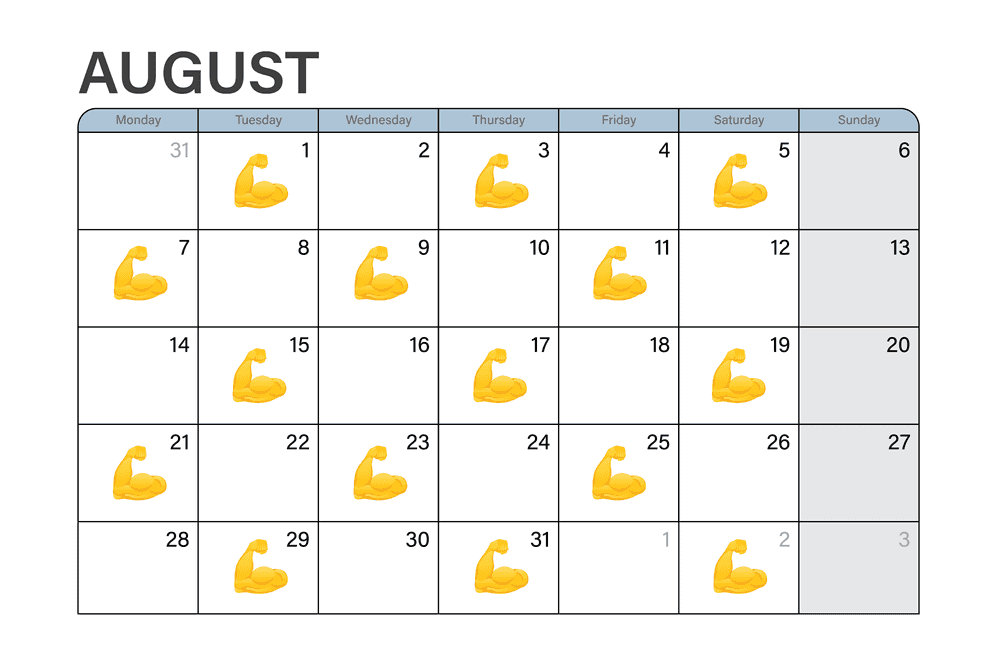
It is recommended to lift weights at least two to three times per week. This will help you build muscle and strength, and it can also help to improve your bone density.
If you are new to weightlifting, start slowly and build over time. Where you start depends on your personal strength and goals for training.
What About Functional Bicep Strength?
While both biceps exercises discussed above are great for building biceps strength in isolation, they don’t fully address functional strength. To build functional bicep strength, it is important to complete compound exercises that mimic everyday activities. Compound exercises use several muscles collaboratively to perform a movement. These types of exercises will help you to better use your biceps in everyday life and prevent injuries, which is more important than how much weight you can curl.
After all, a bulging bicep isn't going to help you carry a baby on your hip, pick up a bag of groceries, or open a jar of pickles. But having strong, functional biceps will!
Alternatives to Bicep Curls and Hammer Curls
If you’re looking for alternatives to bicep curls and hammer curls, try doing exercises that target the entire upper body — or maybe even the full body. These types of exercises will help to build strength in the arms, shoulders, and back, since we don't typically use our muscles in isolation with daily activities.
Some of our favorite upper body exercises that target the biceps, and beyond, include:
- Push-ups
- Pull-ups (with palms facing up)
- Rows
- Planks
- Side planks
- Plank rows
- Ball throwing
- Downward dog
- Straight arms lifts (to the front or side with thumbs up)
- Kettlebell swings
- Pushing heavy objects
- Boxing
- Gripping activities
- And beyond...
If you'd like personalized recommendations to maximize your workout potential, talk to a movement expert at CityPT.
How a Physical Therapist Can Help You Maximize Your Bicep Function
If you have any pain in your arms or shoulders, or if you are unsure of how to properly complete any of the exercises listed above, it is important to seek the appropriate help. A CityPT physical therapist can provide you with guidance on how to properly and safely complete exercises, and help you determine which ones are right for you based on your personal goals and current fitness level.
Schedule your initial evaluation to get started on your journey to better arm & bicep function, and living your best life.
Avoid the Cookie Cutter Approach to Bicep Strength
Overall, both exercises are effective for building bicep strength. So the next time you're wondering if you should be doing hammer curls or biceps curls, remember that it's more important to consider how it'll impact your personal goals. Choose a mix of exercises that promote upper body flexibility, strength, endurance, and coordination.
Before you go, please read our disclaimer. This blog is intended for informational purposes only. We are not providing legal or medical advice and this blog does not create a provider-patient relationship. Do not rely on our blog (or any blog) for medical information. Always seek the help of a qualified medical professional who has assessed you and understands your condition.

JayDee Vykoukal is an author, holistic health coach, mom blogger, and passionate Doctor of Physical Therapy. She loves teaching healthy living, writing about motherhood, traveling and spending quality time with her family.

JayDee Vykoukal is an author, holistic health coach, mom blogger, and passionate Doctor of Physical Therapy. She loves teaching healthy living, writing about motherhood, traveling and spending quality time with her family.
